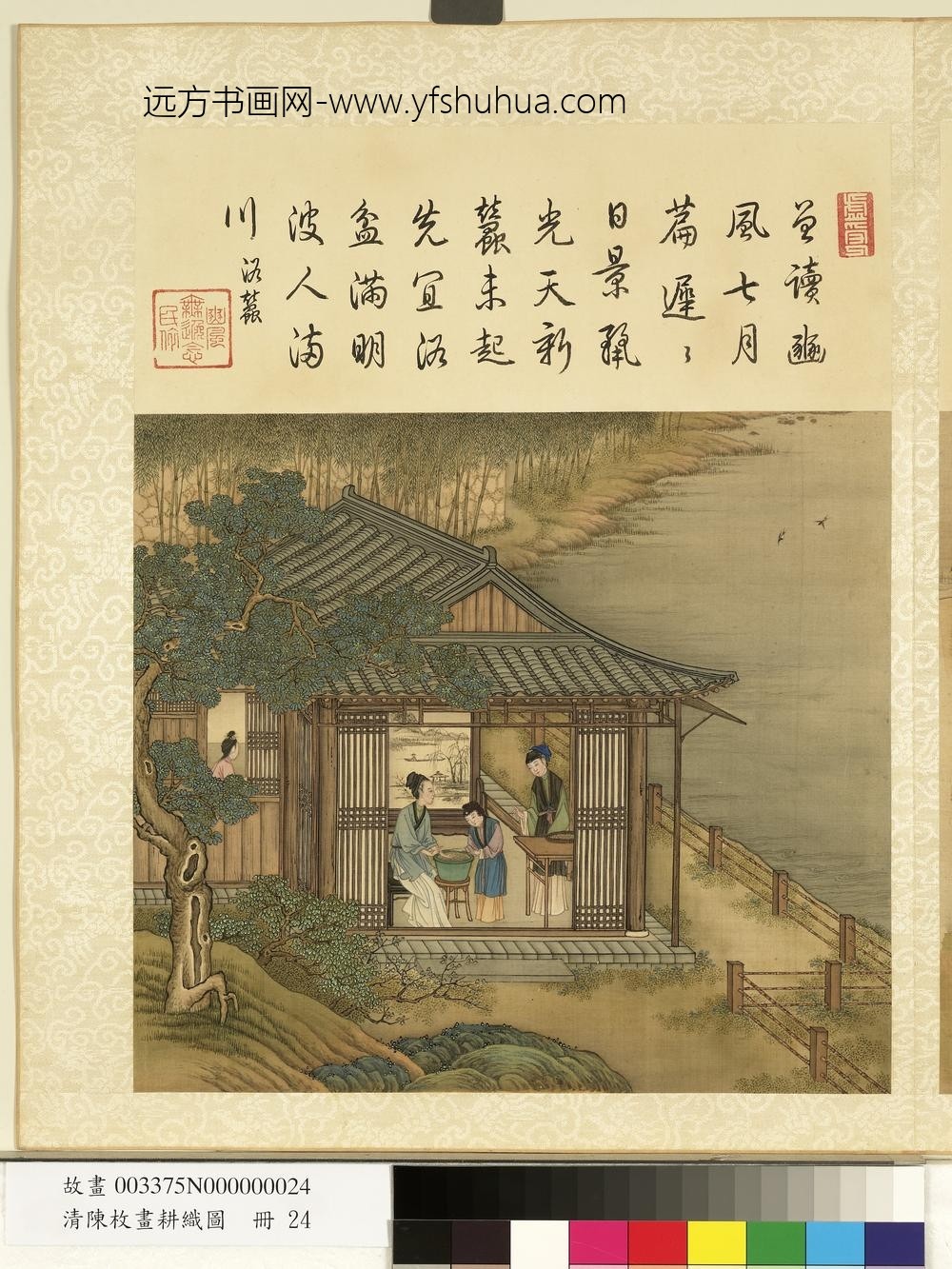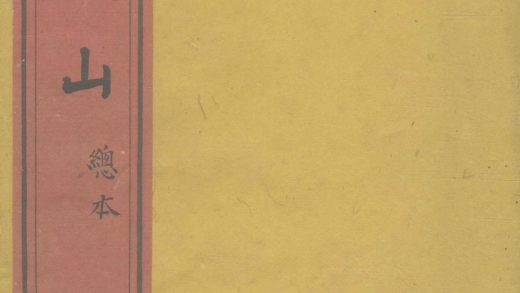【作品基本信息】
| 作者 | 陈枚 |
| 品名 | 耕织图册-浴蚕 |
| 朝代 | 清代 |
| 文件大小 | 18.04MB |
| 分辨率(DPI) | 300×300 |
| 像素大小 | 2124×2832 |
| 尺寸(CM) | 17.98×23.97 |
| 作品数量 | 1 |
| 作品收藏 | 台北故宫博物院 |
基本数据
| 藏品类型 | 绘画 |
| 品名 |
清陈枚画耕织图 册 浴蚕 Bathing to Select the Silkworms |
| 分类 | 绘画 |
| 作者 | 陈枚 |
| 数量 | 一幅 |
典藏尺寸
| 【位置】 | 【尺寸】(公分) |
| 本幅 | 26.5×29.6 |
| 本幅上方 | 11.4×29.6 |
质地
| 【质地位置】 | 【质地】 |
| 本幅 | 绢 |
| 本幅上方 | 纸 |
题跋数据
| 【题跋类别】 | 【作者】 | 【位置】 | 【款识】 | 【书体】 | 【全文】 |
| 题跋 | 清高宗 | 本幅上方 | 行书 | 曾读豳风七月篇。迟迟日景丽光天。新蚕未起先宜浴。盆满明波人满川。浴蚕。 | |
|
印记: 豳风无逸念民依、虚受人 |
|||||
印记资料
| 【印记类别】 | 【印记】 |
主题
| 【主题类别】 | 【主题(第一层)】 | 【主题(第二层)】 | 【主题说明】 |
| 其他主题 | 山水 | 溪涧、湍泉 | 溪 |
| 次要主题 | 人物 | 百姓 | 仕女 |
| 其他主题 | 树木 | 竹 | |
| 其他主题 | 翎毛 | 雁 | |
| 次要主题 | 建筑 | 房舍 | |
| 其他主题 | 建筑 | 栏杆 | |
| 次要主题 | 器用 | 耕织渔猎 | 织(浴蚕) |
| 其他主题 | 器用 | 家具(屏风) | 屏风、桌椅 |
| 其他主题 | 器用 | 盆 | |
| 主要主题 | 民俗技艺 | 耕织 |
技法
| 【技法】 | 【技法细目】 |
| 工笔 | |
| 界画 | |
| 皴法 | 披麻皴 |
| 人物衣纹描法(匀称线条) |
参考数据
| 【类别】 | 【参考数据】 |
| 收藏着录 | 石渠宝笈初编(重华宫),下册,页751-755 |
| 收藏着录 | 故宫书画录(卷八),第四册,页154 |
| 收藏着录 | 故宫书画图录,第二十五册,页174-181 |
| 内容简介(中文) | 陈枚(约1694-1745)上海松江人,雍正初年进入宫廷,乾隆初年离开宫廷,为〈清院本清明上河图〉的画家之一。陈枚的仕女画风延续焦秉贞、冷枚等人,沿用西洋透视构图描绘建筑。清宫绘制〈耕织图册〉多套,以焦秉贞于康熙年间最早,后冷枚、陈枚皆有踵继。此处选陈枚作品为代表为祭神、浴蚕以及纬、织。清宫本皆强调其中建筑的远近缩放比例,并略微缩小人物尺寸以突出空间深度效果。 |
| 内容简介(英文) | Ch’en Mei, a native of Sungkiang near Shanghai, entered court service in the early Yung-cheng reign (1723-1735) and left the court in the early Ch’ien-lung reign (1736-1795). He was one of the court painters who took part in the project of painting “Up the River on the Ch’ing-ming Festival.” Ch’en’s style of painting ladies followed that of Chiao Ping-chen (fl. ca. 1689-1726) and Leng Mei (fl. ca. 1677-1742), also making use of Western perspective and compositional methods to depict buildings. The Ch’ing court commissioned several sets of “Illustrations of Agriculture and Sericulture.” The earliest was by Chiao Ping-chen in the K’ang-hsi reign (1662-1722), followed by Leng Mei and then Ch’en Mei. Here, the representative sections of Ch’en Mei’s work that have been selected are those on “Sacrifice to the Gods” and “Bathing the Silkworms” as well as on woof and weaving. All of the Ch’ing editions emphasize the relative proportion of distances and sizes to the buildings, slightly reducing figures in order to suggest the depth of space. |
【作品展示】

耕织图册-浴蚕




